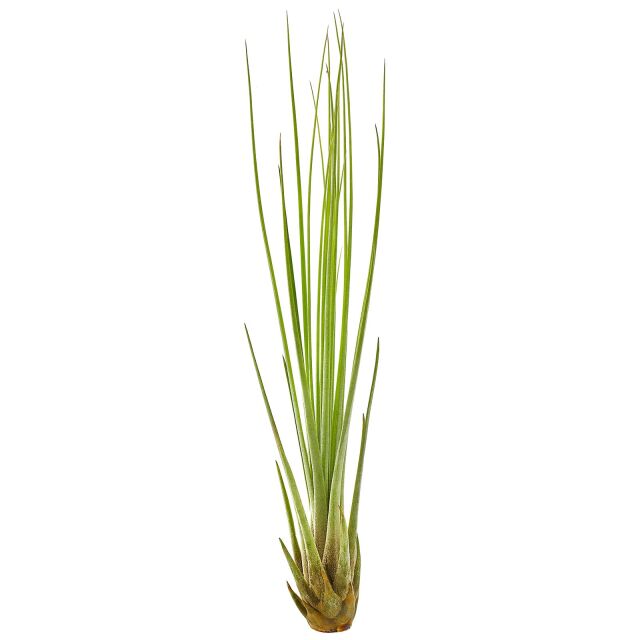Rush-like air plant






Tillandsia juncea
Rush-like air plant
- Aerial plant with rush-like leaves
- Up to 35 cm tall
- Impressive epiphyte
Item question
We’re here for you!
Please enter your question and e-mail and we’ll contact you as soon as possible. It usually takes us up to 24 hours during business days to respond.
Thank you for your question!
Thank you, we’ll get in touch!
Close window
You already sent us a question.
Please wait a few minutes
Description
Tillandsia juncea grows from Mexico to Bolivia and eastern Brazil on tree trunks and branches, from lowland to mountainous areas. It grows firmly on the bark with adhesive roots and slowly forms clumps of many leaf rosettes. With its long, thin leaves, this large Tillandsia, about 35 cm high, resembles rushes (Juncus), hence its name. Several forms of this species are in cultivation. It forms narrow, violet flowers with yellow stamens on slender inflorescences. After flowering, the respective rosette of leaves dies off, but before that it forms pups at the base.

Tillandsia juncea is counted among the "Grey Tillandsia" type. These mostly come from drier places like treetops, dry forests or even deserts with little rain but lots of mist. These "air plants" absorb water and nutrients completely via the many absorbent scales on the leaves, even from very humid air. The roots, if still present, serve as adhesive roots. In culture, such Tillandsias are tied or glued to solid materials such as wood or stones. The light requirement is rather high. Higher humidity is favourable, but not constantly very humid, stagnant air, because the plants must be able to dry off. Therefore "Grey Tillandsias" are not well suited for rainforest terrariums, or they need a drier, well ventilated place in them. One sprays the plants with soft water dripping wet about two to three times a week. Dipping is also possible. An orchid and Tillandsia fertiliser can be added with every second watering. Propagation is done by separating individual pups or dividing the bunch.
With its tall, fine-leaved "grass bushes", Tillandsia juncea is an unusual epiphyte and looks best where it has plenty of space, even on vertical branches and trunks. Especially older clumps with many leaf rosettes and inflorescences look impressive.
Profile
| Tillandsia juncea | |
| Cultivation Options | Epiphytic, lithophytic |
| Height | 30 - 50 cm |
| Temperature | 15 - 25 °C, tolerates short-term deviations |
| Humidity | 50 - 70 %, also tolerates lower humidity |
| Light Requirement | Bright, indirect light; avoid direct sunlight |
| Watering | Regular spraying with soft, low-lime water |
| Fertilization | Diluted liquid fertilizer, every 2 months during the growth period |
| Propagation | Offsets (pups) forming after flowering |
| Suitable for | Small to medium-sized terrariums |
| Cultivation Options |
| Epiphytic, lithophytic |
| Height |
| 30 - 50 cm |
| Temperature |
| 15 - 25 °C, tolerates short-term deviations |
| Humidity |
| 50 - 70 %, also tolerates lower humidity |
| Light Requirement |
| Bright, indirect light; avoid direct sunlight |
| Watering |
| Regular spraying with soft, low-lime water |
| Fertilization |
| Diluted liquid fertilizer, every 2 months during the growth period |
| Propagation |
| Offsets (pups) forming after flowering |
| Suitable for |
| Small to medium-sized terrariums |
Terrarienpflanzen
Our terrarium plants give every terrarium an individual, natural atmosphere and at the same time provide a healthy environment for all terrarium inhabitants. Our wide range of tropical, subtropical and even arid plants are easy to combine and enhance any terrascape. Whether it's strong succulents, subtle tillandsias, eye-catching neoregelias or wonderful orchids - we offer terrarium plants for different terrascapes from rainforest to desert.
General information
Please choose a variant to see more information.
| Item no. |
|
| EAN | |
| Weight | |
| Shipping weight |
Customers ask customers
You have questions about this product? Ask other customer or our support team about this product!